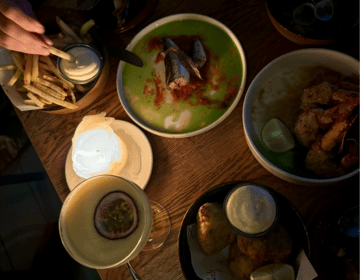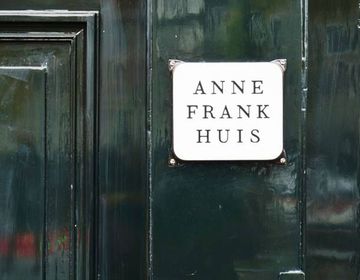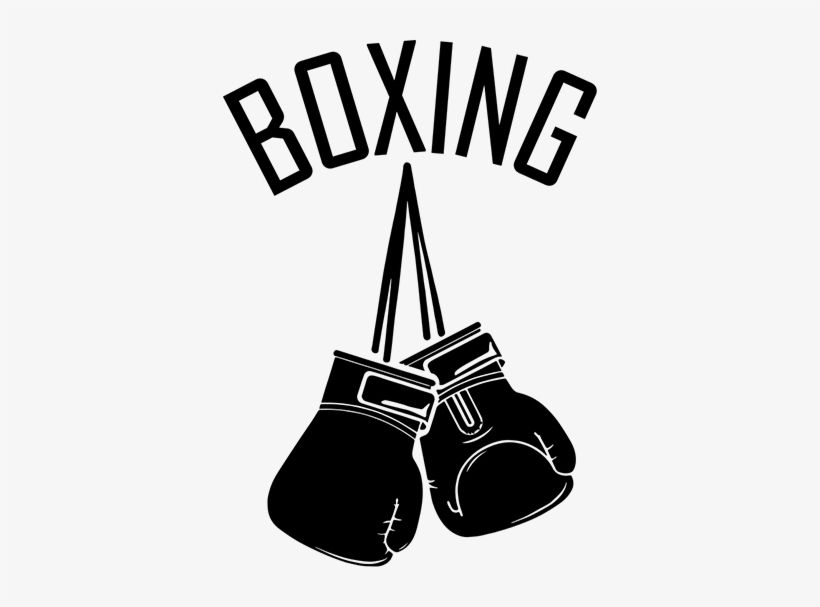The Art of Boxing
I came to Amsterdam expecting to acquire cross-cultural communication skills, a global perspective, and a deep seated love of traveling. What I did not predict was walking away with a set of deadly kickboxing combinations stored in my muscle memory.
During the first week of study abroad orientation, we were able to sample a variety of sports classes offered through the University of Amsterdam. I found myself in a kickboxing class, doubling over already during the warm-ups, awkwardly throwing punches at my friend and clumsily kicking like a baby flamingo trying to balance on one foot.
I absolutely loved it.
I immediately registered for all the boxing and kickboxing classes at a UVA gym called Club West. After my first week of classes, I bought myself a pair of black boxing gloves and hand wraps. I was (no pun intended) hooked.
I quickly realized that this is a sport that requires full presence of mind. Otherwise, the consequences are devastating. It is not just a missed shot or a lost race—it’s a punch to the face, a knee in the stomach, a kick to the head. The stakes are high, but so are the rewards—in those moments, I feel fully alive.
The combinations are long and complex. One second losing my concentration means that either me or my opponent gets hurt—failure to duck a swing, to block a blow. Of course there are times when we both mess up, but whiplash fast instincts on the other person’s part save the day.
I often returned home with bruises speckling my legs and arms. In the beginning, my fingers were so sore and unused to clenching into a fist that I had trouble opening doors. My hand wrapping was sloppy and my wrist felt brittle. Every time my glove hit made contact, it made an unsatisfying sound, one that indicated to my coach that I wasn’t gripping my fist hard enough.
Fast forward three months: I graduated from the beginners course. I still got bruises, but not as dark nor as many nor as long-lasting as before. I still got hit, but I can stomach the pain. My footwork improved enormously as I danced in and out of my opponents’ reach (or so I like to think). The last fifteen minutes of class reserved for sparring still jarred me, but I became a little less afraid of blocking kicks that could shatter bone. I finally learned how to “lean in” to block the kicks instead of instinctually moving away. The irony doesn’t escape me—I had to fight my instinct to dodge in order to minimize the pain.
These classes became an outlet for my anger, frustration, jitters, nerves. Although it was hard to drag myself out of my room and at times endure a twenty-minute rain-soaked bike ride, I never regretted going to class. As I took off my shoes outside the dojo and strapped on my gloves and shin guards, it was like I was taking off my fears and worries and replacing it with courage and grit.
I didn’t expect to find community in this group of teens and young adults ranging all levels and experiences. They had my back and I had theirs. Because we rotated partners, I’ve sparred against everyone who attended those classes, cultivating my flexibility and sharpness to adapt to different fighting styles. I received coaching on how to make a liver hook powerful, how to avoid getting flipped to the ground, how to punch through an opponent. There were times when I wanted to cry because an opponent rained blows incessantly to my temples and my face, or because I was drop-dead tired and couldn’t defend myself anymore. Times when I wanted to give up after my 50th pushup that class. But I’m thankful for my classmates who cheered me on, and the coaches who wouldn’t take it easy on us. More importantly, I refused to take it easy on myself. Certain parts of my study abroad experience have knocked me down, but I’m proud to say, at least I kicked back.


Related Posts

7 Reasons to Study Abroad in Amsterdam
By: Iravati Deo Chadha Studying abroad is one of the best decisions I have made in my college career, and I know I chose the right city. Amsterdam is lively... keep reading

Let’s Eat in Amsterdam!
By: Clare Cardoza While in Amsterdam, if you’re not in the mood for its famous pickled herring or stamppot dinner, there are still so many restaurants that offer delicious cuisine... keep reading

Amsterdam Top 5 Museums to Visit
By: Emma Janssen Amsterdam is a bustling city with incredible tourist attractions that you must see when you’re here! Having spent almost three months studying abroad in Amsterdam, I’ve had... keep reading

